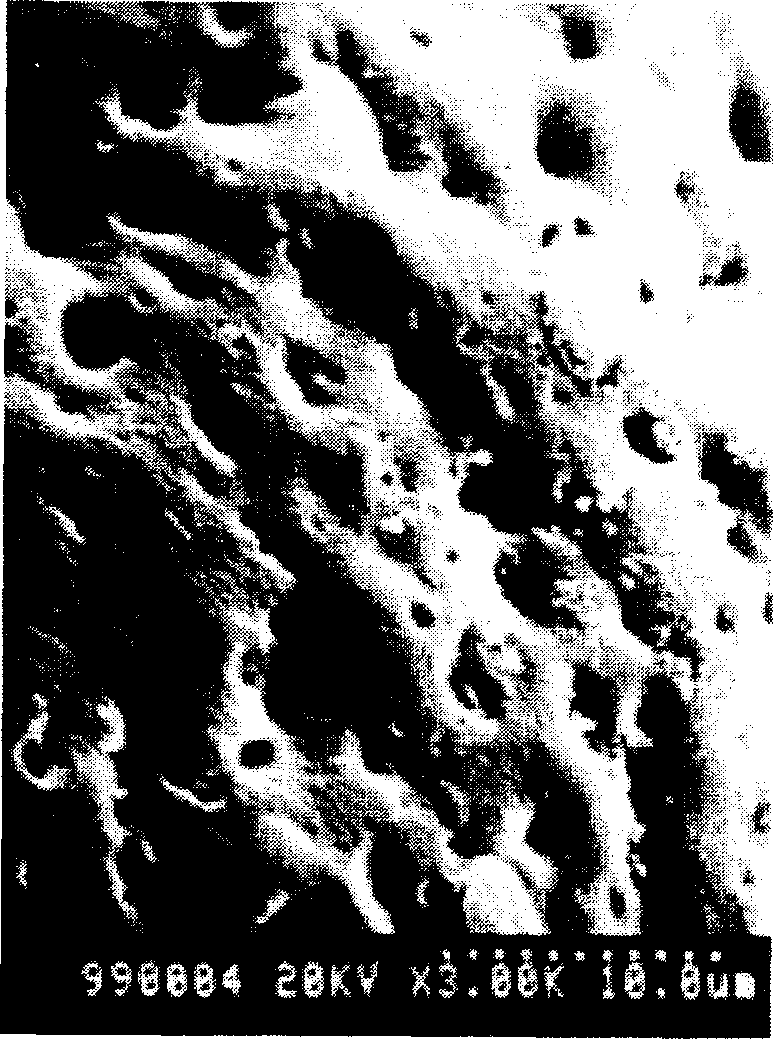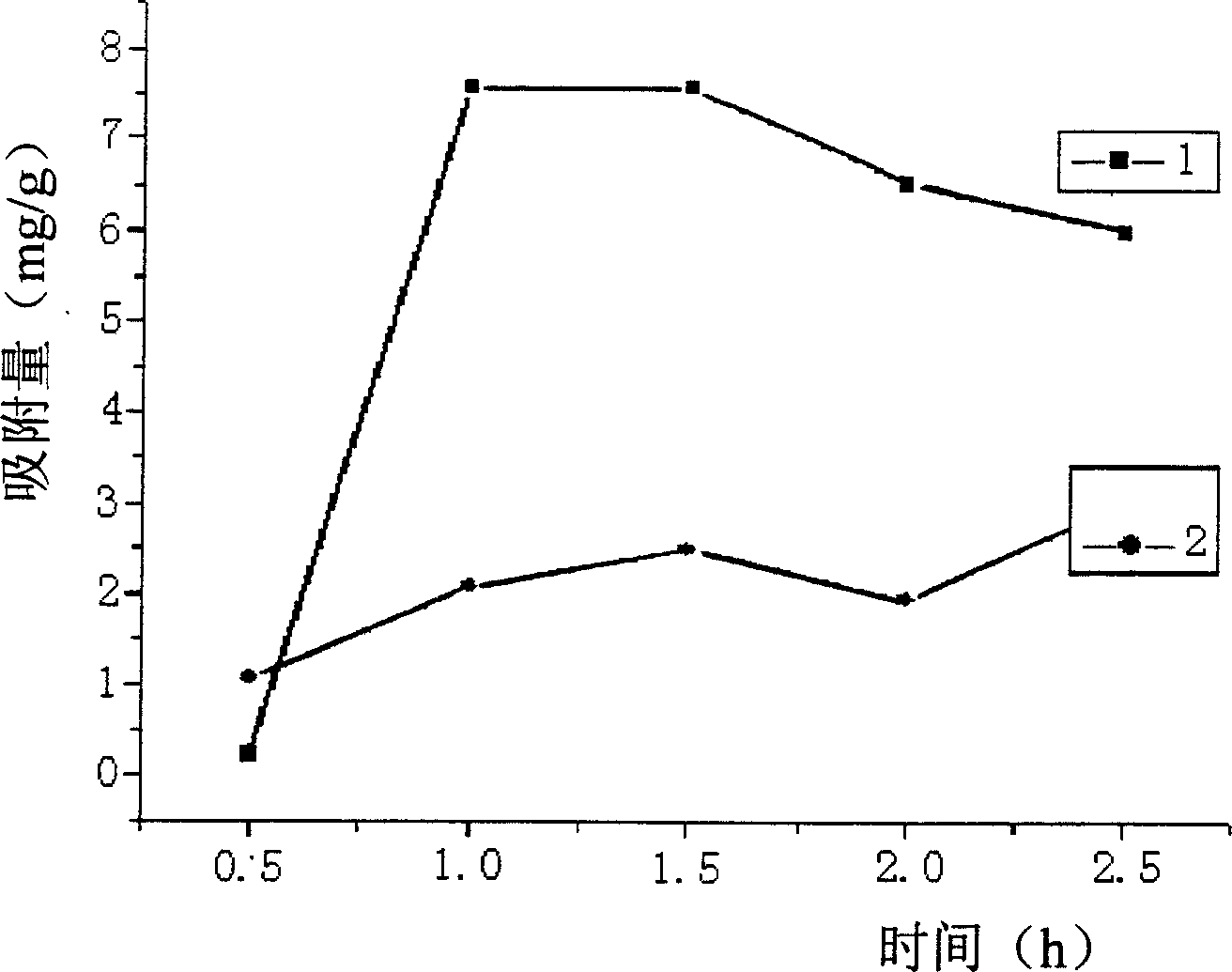Macromolecular chromoprotein adsorbing medium and its application
A technology for adsorbing substrates and pigment proteins, applied in other chemical processes, chemical instruments and methods, etc., can solve the problems of short biological half-life and achieve high adsorption capacity and wide adsorption range
- Summary
- Abstract
- Description
- Claims
- Application Information
AI Technical Summary
Problems solved by technology
Method used
Image
Examples
Embodiment 1
[0031] Preparation of chitosan-glycine copolymerized porous spheres
[0032] Weigh 2g of chitosan and 0.93g of glycine, dissolve in 40ml of 5% acetic acid to prepare chitosan-glycine mixed solution, add 10ml of ethyl acetate to the mixed solution. Disperse this mixed solution in 120ml toluene (containing 1% (v / v) SP80), after the dispersion is uniform, add 25% glutaraldehyde (keep n-NH 2 :n-CHO=1:4), after the gelation is completed, add 5% NaOH solution, adjust the pH at about 10, raise the temperature to 40°C for 1 hour, then raise the temperature to 70°C for 2 hours to solidify the ball, and then Filter, wash with toluene and ethanol, rinse the resin with distilled water, wash off excess glutaraldehyde and small molecular compounds, and finally wash with ethanol, dry, and obtain copolymerized porous balls (see figure 1 , 2 ).
[0033] Adsorption of phycoerythrin by copolymerized porous spheres:
[0034] Static adsorption: take by weighing 0.5 grams of chitosan-glycine co...
Embodiment 2
[0037]Take by weighing 2g chitosan and 0.93g glycine (Ncs: Ngly (the amino molar ratio of chitosan-glycine)=1: 1), be dissolved in the acetic acid of 40ml volume concentration 5%, make chitosan-glycine Mixed solution, 20ml of ethyl acetate was added to the mixed solution. Disperse this mixed solution in 120ml of toluene (containing 1% (v / v) SP80), after the dispersion is uniform, add 10ml of pre-crosslinking agent formaldehyde, after 15min, add 10ml of 25% glutaraldehyde (keep n-NH 2 : n-CHO=1:4), after the gelation is completed, add 5% NaOH solution, adjust the pH to about 10, add 3.5ml epichlorohydrin in two times, heat up to 40°C for 1 hour, and then heat up React at 70°C for 2 hours to solidify the spheres, then filter, wash with toluene and ethanol, rinse the resin with distilled water, and finally wash with ethanol and dry to obtain copolymerized porous spheres.
[0038] Static adsorption: Weigh 0.5 g of chitosan-glycine copolymerized porous spheres, place them in a con...
Embodiment 3
[0041] Static adsorption: Weigh 0.5 g of the chitosan-glycine copolymerized porous spheres prepared in Example 1, place them in a conical flask, add 1.5 ml of phycocyanin solution, and dilute to 20 ml with distilled water. Add the pellets into the Erlenmeyer flask, shake on a shaker, and set the temperature at 37°C. Take distilled water as the blank solution, take samples at the beginning and 10min, 30min, 1.0h, 1.5h, 2.0h, and 2.5h respectively, measure the OD value with a spectrophotometer after sampling, and determine the adsorption amount according to the relationship between the OD value and the concentration. Plot the adsorption amount against time to obtain the adsorption equilibrium curve (see Figure 4 Series 1).
[0042] Dynamic adsorption: take a certain amount of chitosan-glycine copolymerized porous spheres prepared in Example 1, put them into a glass chromatography tube as an adsorption carrier, add a certain concentration of phycocyanin solution, and control th...
PUM
| Property | Measurement | Unit |
|---|---|---|
| adsorption capacity | aaaaa | aaaaa |
| adsorption capacity | aaaaa | aaaaa |
Abstract
Description
Claims
Application Information
 Login to View More
Login to View More - R&D
- Intellectual Property
- Life Sciences
- Materials
- Tech Scout
- Unparalleled Data Quality
- Higher Quality Content
- 60% Fewer Hallucinations
Browse by: Latest US Patents, China's latest patents, Technical Efficacy Thesaurus, Application Domain, Technology Topic, Popular Technical Reports.
© 2025 PatSnap. All rights reserved.Legal|Privacy policy|Modern Slavery Act Transparency Statement|Sitemap|About US| Contact US: help@patsnap.com



